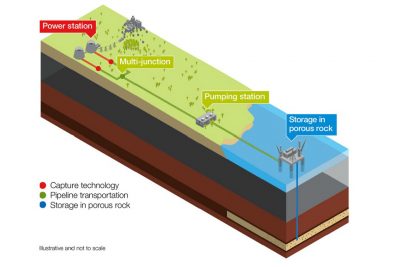Ramping Up Carbon Capture
November 12, 2020

A study led by the Bureau of Economic Geology makes the case that trapping emissions underground could go a long way toward reducing global greenhouse emissions.
The study — from the Jackson School of Geosciences, the Norwegian University of Science and Technology, and the Equinor Research Centre — looks at the technology of carbon capture and storage (CCS), which is a method of capturing carbon dioxide from industrial and power plants and storing it more than a mile underground within tiny spaces in the rock.
The United Nation’s Intergovernmental Panel on Climate Change (IPCC) has stated that CCS needs to achieve 13% of the world’s necessary emission reductions by 2050. Some policymakers, industry representatives and nongovernment organizations are dubious that CCS can meet its portion of the goal, but the study published on Nov. 29, 2019, in Nature Scientific Reports shows that CCS could achieve the IPCC targets. “With this paper, we provide an actionable, detailed pathway for CCS to meet the goals,” said co-author Tip Meckel, a senior research scientist at the bureau. “This is a really big hammer that we can deploy right now to put a dent in our emissions profile.” The paper looks at the amount of geological space available in formations that are probably suitable to hold greenhouse gas emissions, keeping them from the atmosphere. It also calculates the number of wells needed worldwide to reach the IPCC’s 2050 goal. It concludes there is enough space in the word’s nearshore continental margins to meet the IPCC’s goal of storing 6 to 7 gigatons of CO2 a year by 2050, and that the goal could be achieved by installing 10,000 to 14,000 injection wells worldwide in the next 30 years.
That may sound like a lot of wells, but the researchers point out that the oil and gas industry has already shown that speedy buildup of infrastructure is possible. Worldwide, the CCS deployment required during the next three decades would have to be about equivalent to the development of oil and gas infrastructure in the Gulf of Mexico during the past 70 years, or five times the development of Norwegian oil and gas infrastructure in the North Sea.
Meckel also pointed out that there are significant tax credits in the United States to help make carbon capture projects possible and said this could act as a model for other countries, particularly those with industries near the coast where CO2 could be more easily transported by pipelines into underground, offshore geological formations.
Back to the Newsletter